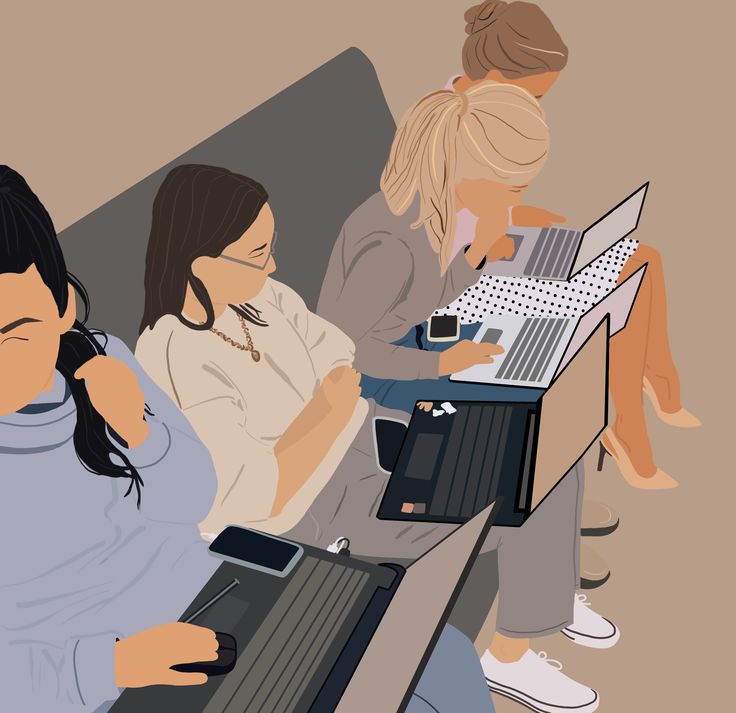
Let’s talk about how education can truly empower girls and break barriers. From innovative programs to leveraging technology, there’s so much being done—and still so much more to do.
Section 1: Breaking Barriers with Tailored Educational Programs

Education is like a key—it unlocks opportunities, confidence, and independence for girls. But it’s not just about getting them into classrooms; it’s about creating environments and curriculums that work for them. Programs like the Malala Fund have been game-changers, investing millions in grants across countries like Pakistan, Brazil, and Nigeria to ensure girls have access to education. Similarly, CAMFED (Campaign for Female Education) has supported over 5.5 million children in Africa, proving that tailored approaches can create ripple effects of empowerment.
Tailoring education means considering cultural and socio-economic diversity. For instance, in Bangladesh, a simple scholarship program quadrupled the number of girls in secondary school. These efforts show that when programs align with local needs—like providing stipends or building girl-friendly schools with separate bathrooms—enrollment skyrockets.
Another big focus is early STEM education. By introducing science, technology, engineering, and math early on, girls not only gain valuable skills but also challenge gender stereotypes. This builds their confidence and opens doors to careers traditionally dominated by men.
Of course, challenges remain. Many programs face obstacles like lack of funding, societal resistance, and unsafe school environments. But solutions like community engagement, advocacy for gender equality, and partnerships with local leaders are helping chip away at these barriers.

Section 2: Harnessing Technology to Enhance Educational Access for Girls
Now let’s talk tech! Digital tools are revolutionizing how girls access education worldwide. Platforms like Khan Academy and Coursera are bringing learning to girls who might otherwise be left behind due to distance or lack of resources. For example, Ignis Careers has developed a life skills curriculum that integrates STEM awareness with personal safety and career guidance through after-school programs.
But here’s the catch—not everyone has access to the internet or digital devices. Digital literacy is another hurdle; many girls need support just to navigate these tools effectively. Organizations are tackling this by providing affordable devices, offering digital training programs, and advocating for better internet access in underserved areas.
One of the most exciting parts of this movement is seeing women in tech stepping up as mentors and role models. When girls see leaders who look like them thriving in fields like coding or engineering, it sparks inspiration. It’s a powerful reminder that they too can break into these spaces.
And the impact? It’s massive! Empowering girls through technology doesn’t just change their lives—it uplifts entire communities. Educated girls often reinvest their knowledge back into their families and economies, creating a ripple effect of progress.
Sources
Regenerators – Educating Girls & Empowering Women
Malala Fund Strategic Plan
MIT Solve – Life Skills for Girls
FAWCO – Challenges Abound in Girls’ Access to Education
Masaar – Bridging the Gender Gap in Education through Digital Technologies
These efforts showcase how education—whether through tailored programs or tech innovations—can truly empower girls and transform societies for the better!
What are the main challenges faced by girls in accessing education in different countries?

Girls around the world face numerous challenges in accessing education, and these barriers vary by region due to cultural, economic, and structural factors. Here’s a breakdown of the main hurdles:

1. Poverty
Poverty is one of the most significant barriers to girls’ education globally. Even when school fees are eliminated, associated costs like uniforms, textbooks, and transportation can be prohibitive for families. In many cases, families prioritize boys’ education over girls’, perceiving it as a better investment.
Girls in low-income households are often required to contribute to household income or perform domestic chores, reducing their time for school.
2. Child Marriage and Early Pregnancy
In many regions, child marriage disrupts girls’ education. Families in financial distress may marry off daughters early to reduce economic burdens.
Early pregnancies further exacerbate this issue, as societal norms often prevent young mothers from returning to school.
3. Gender-Based Violence
Violence against girls on their way to or within schools is a pervasive issue. This includes physical, sexual, and emotional abuse, creating unsafe learning environments that deter attendance.
In conflict zones, attacks on schools and gender-targeted violence disproportionately affect girls.
4. Period Poverty and Lack of Sanitation
Many schools lack adequate sanitation facilities for girls, especially during menstruation. This forces girls to stay home during their periods or drop out entirely.
Period poverty—the inability to afford menstrual products—also contributes significantly to absenteeism.
5. Cultural Norms and Gender Discrimination
Deeply entrenched cultural norms often prioritize boys’ education over girls’. In some societies, educating girls is seen as unnecessary since their roles are traditionally confined to caregiving and domestic responsibilities.
Gender stereotypes in curricula and classroom interactions further discourage girls from pursuing higher education or STEM fields.
6. Conflict and Crisis Settings
Girls in fragile and conflict-affected areas are 2.5 times more likely to be out of school compared to those in stable regions. Schools are often destroyed or unsafe, and displacement leaves families unable to prioritize education.
In these contexts, girls face compounded risks of exploitation, violence, and forced labor.
7. Lack of Infrastructure
Rural areas often lack schools within accessible distances, making it difficult for girls to attend regularly.
Poor infrastructure also means limited access to clean water, electricity, and safe transportation—all critical for sustaining education.
8. Digital Divide
The rise of online learning has highlighted disparities in digital access. Many girls in rural or impoverished areas lack internet connectivity or devices needed for remote education.
Digital literacy is another barrier; even when technology is available, many girls lack the skills to use it effectively.
9. Socioeconomic Pressures
Societal expectations often push girls into caregiving roles at home rather than allowing them the time or opportunity to pursue an education.
Economic pressures force many adolescent girls into income-generating activities instead of continuing school.
10. Policy Gaps
Insufficient funding for education systems disproportionately affects girls by limiting resources like scholarships or gender-responsive programs.
A lack of policies addressing gender disparities perpetuates unequal access and outcomes in education.

Proposed Solutions
To address these challenges:
Provide financial incentives like scholarships and stipends for families sending their daughters to school.
Build gender-sensitive infrastructure with proper sanitation facilities.
Enforce laws against child marriage and gender-based violence.
Promote community awareness campaigns highlighting the benefits of educating girls.
Increase investment in digital tools and training programs for underserved regions.
Develop inclusive policies that prioritize equal access for all genders.
Sources
LinkedIn – Breaking Barriers: Addressing Challenges to Girls’ Education
Global Citizen – 7 Obstacles to Girls’ Education
Bachelor Studies – Five Global Challenges to Girls’ Education
Girl Rising – Barriers to Girls’ Education
World Bank – Girls’ Education Overview
OHCHR – The World Is Failing 130 Million Girls Denied Education
How does child marriage contribute to the educational disparities faced by girls

1. Forced School Dropout
When a girl gets married, she is often expected to leave school immediately. This expectation stems from gender norms that prioritize her role as a wife and mother over her education. As a result, many girls are forced to abandon their studies.
2. Barriers to Returning
For married girls, returning to school is extremely challenging. They may face overwhelming household responsibilities, societal stigma, and cultural norms that keep them confined to home, making it nearly impossible to continue their education.
3. Adolescent Pregnancy
Child marriage frequently leads to early pregnancies, which further increases the likelihood of school dropout. Pregnant adolescents may be excluded from school due to legal restrictions, lack of support for re-enrollment, and societal stigma surrounding young mothers.
4. Reduced Literacy and Educational Attainment
Women who marry early are statistically less likely to be literate and have lower levels of educational attainment. The impact of early marriage can result in significant gaps in education compared to their peers who remain unmarried.
5. Cyclical Impact
Child marriage perpetuates a cycle of limited education and economic opportunities for girls. This cycle reinforces gender inequalities, limiting their potential for personal and professional growth.
6. Economic Factors
In low-income families, child marriage is sometimes viewed as a way to alleviate financial burdens. Families may prioritize immediate economic needs over long-term investment in a girl’s education, sacrificing her future for short-term relief.
7. Societal Perceptions
In many cultures, once a girl reaches puberty or gets married, her education is often deemed unnecessary. Her value becomes closely linked to her ability to fulfill domestic roles rather than pursue academic or professional aspirations.
8. Reduced Probability of Completion
Every year that a girl marries early significantly reduces her chances of completing secondary school. This has long-lasting effects on her opportunities and quality of life. By addressing the issue of child marriage, we can help eliminate a critical barrier to girls’ education and promote gender equality in educational attainment. Empowering girls through education not only benefits them individually but also has positive ripple effects on families and communities as a whole.
No Responses